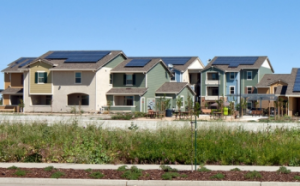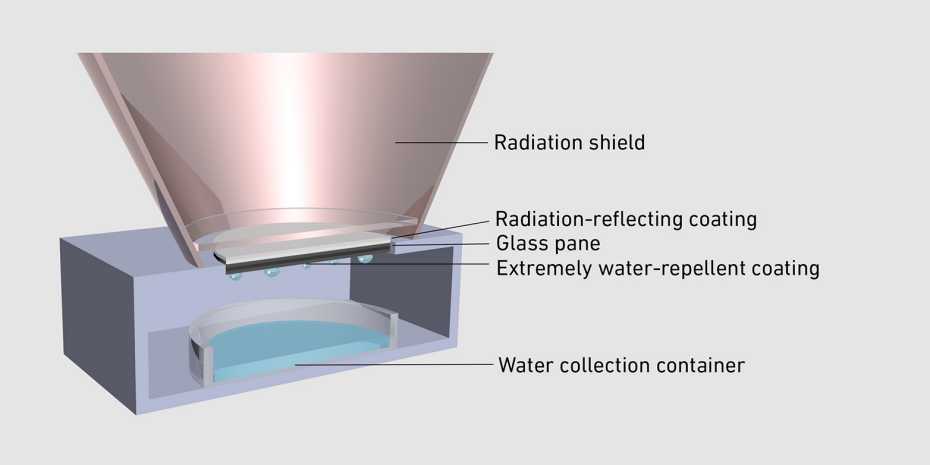RENW | Over the summer, a unique coalition came together in California to draft a plan to make the state’s clean energy economy more equitable for low-income renters. If state energy officials adopt the coalition’s proposed plan, it will put in place a groundbreaking strategy for providing greater access to clean energy technologies like solar and energy storage, thus improving the economic and energy security of low-income households and disadvantaged communities.
The plan developed by the coalition supports the implementation of AB 693 — California’s new $1 billion affordable housing solar energy program. The new program provides up to $100 million annually for 10 years from investor-owned utilities’ cap-and-trade allowance revenues to install solar energy systems for the primary benefit of low-income renters residing in affordable multifamily rental properties. Significant mandates in the legislation include the following:
- Program incentives must be aligned with solar installation costs and account for other sources of funding.
- Utility tariff structures must ensure economic benefits to tenants.
- Eligible solar energy systems may include other integrated renewable energy components.
- Program must establish local hiring requirements.
- Incentive takers must participate in energy efficiency programs.
- Program funding is dependent on demonstrated demand.
The program has the potential to reach over one third of the state’s publically supported affordable multifamily rental housing market. That represents an opportunity to influence the energy use and reduce the energy costs of more than 150,000 low-income households for decades to come.
Coalition Background and Evolution
In March 2016, a diverse group of nonprofit organizations joined together to discuss how AB 693 should be implemented. Members of the nonprofit solar stakeholders coalition include the California Housing Partnership, California Environmental Justice Alliance, Brightline Defense Project, the Natural Resources Defense Council, and the National Housing Law Project. The organizational mission of each of the coalition members entails advocacy on behalf of the households and communities that are the direct and the intended beneficiaries of the legislation.
The legislative mandates of AB 693 added new requirements and complexities as well as new opportunities to put in place more integrated energy strategies and solutions. The comprehensive scope of this program required the members to consider multiple perspectives and undertake analysis that would have posed organizational challenges had these tasked been pursued in isolation without the benefit of the collective thinking and expertise of all coalition members.
To ensure that AB 693 addresses the long-term energy needs of low-income renters and disadvantaged communities (DACs), the coalition’s efforts gave special attention to matters of providing economic benefits to low-income renters. The coalition worked to ensure that special efforts are provided to address the needs of DACs and achieve geographic diversity, integrating energy efficiency into the program structure, assessing the eligibility of energy storage and its role in preserving and enhancing energy benefits for this market, and developing an incentive structure to ensure that the projects are financially feasible and can be supported by the affordable housing property owners.
The Coalition’s Proposal
In July, the California Public Utilities Commission (CPUC) issued a ruling requesting proposals for implementing AB 693. In response, coalition members — with the expert analytical support of Clean Energy Group — undertook extensive outreach with their constituencies and worked in common cause to collectively develop a proposal on behalf of the program’s intended beneficiaries.
While the plan filed by the coalition is specific to California, it may also provide a guide for other states to create comprehensive clean energy programs for low-income communities and affordable housing.
The core elements of the plan include the following:
Geographic Targeting
In lieu of a first-come first-serve approach used in other programs, which exacerbate the gaps in technology access that AB 693 was enacted to overcome, the proposal emphasizes the need for affirmative measures to provide geographic diversity. These measures include targeted funding allocations of up to 30 percent of the program funding to meet the special needs in DACs; targeted technical assistance provided by independent consultants to overcome capacity gaps and support project assessments; and administrative requirements to ensure that the program’s resources are widely available and not monopolized.
Tenant Allocations and Benefits
Previous solar programs did not require property owners to serve residential units and were not designed to address split incentive barriers. Hence, in many cases, tenants were denied access to renewable energy and stable energy prices. The proposal would require that at least 51 percent of the generation from all solar energy systems installations be allocated for use in residential units, and that 100 percent of the economic benefits from the generation allocated to residential units be applied directly to low-income households. Additionally, to safeguard tenant economic benefits, tenants would not be subject to rent increases or utility allowance adjustments as a result of the solar installations.
Solar Incentives
California’s low-income solar programs have previously adopted incentive structures with higher up-front contributions from property owners for the portion of energy investments serving building common areas. These incentive structures favor third-party financing models over property purchases because of added up-front cost barriers to property owners.
To implement legislative mandates, the proposal recommends that the program align incentives with the full costs that must be borne by the property owner and the property owner’s ability to cover these costs from available energy savings. This approach would create a level playing field in which the property owner can make a choice between competing financing proposals based on the financial outcomes to the property and tenants.
For the projects to pencil out, the coalition recommended that up to 100 percent of the costs of solar systems serving residential units and up to 60 percent of the costs of solar energy systems serving common areas be covered by incentives. This formulation aligns total project costs with the energy savings available to property owners, such as the Federal investment tax credit (ITC) and the low-income housing tax credit (LIHTC). Additional details on the coalition’s incentive structure are shown in the table below, in Table 1.

Table 1 – AB 693 Coalition Proposed Incentive Cost Coverage Structure
Local Hiring
Current solar programs have limited site-training requirements with no requirement or expectation for job placement. The proposal includes meaningful mechanisms to facilitate local hiring to change the dynamic for creating green job opportunities in low-income and disadvantaged communities. Under the proposal, as new hires are needed to install solar energy systems funded by the program, participating solar companies must work with existing workforce development organizations to identify new workers from rosters of persons that have completed formal training through recognized workforce programs.
Energy Efficiency
Past solar programs have not been successful in facilitating participation in existing energy efficiency programs despite legislative mandates do so. The proposal solves these shortcomings by building on successful whole-building program models to integrate energy efficiency improvements with solar installations without adding barriers or financial burdens on property owners or solar providers.
Property owners would receive an upfront ASHRAE Level 2 energy audit and technical assistance to identify site-specific energy efficiency opportunities to reduce energy consumption by at least 15 percent. As a condition of receiving funding for the solar energy systems, property owners would agree on an energy efficiency plan including some or all of the improvements identified by an energy audit. Property owners would have three years to implement the improvements in conjunction with scheduled equipment replacements and occupancy changes. Assistance to property owners also would be provided to facilitate enrollment in existing energy efficiency programs.
Energy Storage
The proposal would, for the first time, allow energy storage devices to be integrated and incentivized with the installation of PV systems under the low-income solar program. The extensive economic analysis, provided by Clean Energy Group and the energy software company Geli, established that investments in energy storage devices add net economic savings and, in cases where demand charges can be reduced, such investments can be more cost-effective than solar PV only investments (see Figure 1.) In fact, for common area loads, adding storage to a solar installation has the potential to double the common area savings for about a third of the cost of the PV system.

Figure 1 — Impacts of Addition of Solar and Solar+Storage on Electricity Bills @Clean Energy Group
Using this and additional analysis, the coalition further concluded that options to integrate energy storage with solar PV and energy efficiency were necessary to preserve and enhance the value of solar energy systems to low-income tenants as utility companies transition to time-of-use rate structures with peak pricing periods that occur later in the day. Importantly, the coalition’s analysis of utility tariff structures included in its reply comments also verified that that current California virtual net metering rules apply to discharges from energy storage to the grid, thereby confirming that tenants can and would directly benefit from the installation of energy storage devices. The coalition estimates that the economic benefits of energy storage could amount to $21 million per year over the life of the program.
Next Steps
The next step in the AB 693 proceeding will come later this year, once the CPUC issues a Proposed Decision for implementation of the program. Until then, the coalition will continue its work on behalf of low-income households, environmental justice communities, and those working to create cleaner and healthier communities in California.
Beyond California, this plan — and its collaborative strategy — could be a model for how states and communities can take action to build a more sustainable energy future in which low-income tenants can share in the benefits of the new clean energy economy.



Wayne Waite (left) is the principal of Waite & Associates. Lewis Milford (center) is president of Clean Energy Group. Seth Mullendore is the project director for the Resilient Power Project at Clean Energy Group.
Members of the Nonprofit Solar Stakeholders Coalition: California Housing Partnership, California Environmental Justice Alliance, Brightline Defense Project, Natural Resources Defense Council, and National Housing Law Project. The Coalition was aided by support from the Asian Pacific Environmental Network, Clean Energy Group, Center for Sustainable Energy, Communities for a Better Environment, Greenlining Institute, and GRID Alternatives.
None of the organizations in the Coalition benefit financially, directly or indirectly, from the installations of solar energy systems under the Program, nor do they represent or advocate on behalf of business interests that might profit from the program.
To learn more about the Coalition’s plan, Clean Energy Group will be holding a two-part webinar series with several of the key participants on September 22 and September 29. Sign up information is at www.cleanegroup.org/webinar/nonprofit-solar-stakeholders-coalition/.
Lead image credit: U.S. Department of Energy

